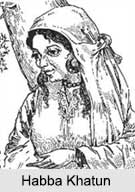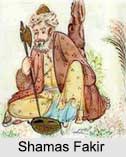 Kashmiri literature consists of a variety of folk forms and is the most representative form. It signifies many features of social change, actions, patterns, hopes, suppressed wishes, creative thoughts, unconscious yearnings and collective dreams.
Kashmiri literature consists of a variety of folk forms and is the most representative form. It signifies many features of social change, actions, patterns, hopes, suppressed wishes, creative thoughts, unconscious yearnings and collective dreams.Kashmiri literature examines the social drama in the geographical frame and with mention to the historical compulsions. For its beauty, assortment and difficulty of explanation, Kashmiri literature has received the attention of various scholars of different fields of learning.
History of Kashmiri Literature
Kashmiri Literature began with the work ‘Mahanayakaprakash’ (Light of the supreme lord) by Shitikantha in 1250 century. It was followed by the poet Lalleshvari or Lal Ded in 14th century. Habba Khatun came later in 16th century with her individual manner and was an exceedingly remarkable poetess, whose lyrics on love and romance referred to as ‘lol’, beguiles by the Kashmiri people even to this date. Rupa Bhavani, Arnimal, Mahmud Gami, Rasul Mir, Maqbool Shah Kralawari and the Sufi poets like Shamas Fakir, Wahab Khar, Soch Kral, Samad Mir, and Ahad Zargar enriched the history of Kashmiri Literature.
 A number of well educated youth turned to Kashmiri Literature in 1950s and some of them were Dinanath Nadim, Rahman Rahi, Ghulam Nabi Firaq Amin Kamil, Ali Mohd Lone, Autar Krishen Rahbar etc. During medieval times, the great Kashmir Valley School of Art, Culture and Philosophy recognised as 'Kashmir Shaivism' arose. Its memorable and irreplaceable masters comprise ‘Vasugupta’ (c. 800), ‘Utpala’ (c. 925), ‘Abhinavagupta’ and ‘Kshemaraja’. Names of the Anandavardhana and Abhinavagupta can successfully be enlisted in the theory of aesthetics. Several generations later, in the present-day contemporary times, a fresh lease of life given to identical "school of thought" was lent by Swami Lakshman Joo of Ishbher/Gupta Ganga, Srinagar.
A number of well educated youth turned to Kashmiri Literature in 1950s and some of them were Dinanath Nadim, Rahman Rahi, Ghulam Nabi Firaq Amin Kamil, Ali Mohd Lone, Autar Krishen Rahbar etc. During medieval times, the great Kashmir Valley School of Art, Culture and Philosophy recognised as 'Kashmir Shaivism' arose. Its memorable and irreplaceable masters comprise ‘Vasugupta’ (c. 800), ‘Utpala’ (c. 925), ‘Abhinavagupta’ and ‘Kshemaraja’. Names of the Anandavardhana and Abhinavagupta can successfully be enlisted in the theory of aesthetics. Several generations later, in the present-day contemporary times, a fresh lease of life given to identical "school of thought" was lent by Swami Lakshman Joo of Ishbher/Gupta Ganga, Srinagar.The earliest utilisation of Kashmiri literature can be witnessed in Kalhana's ‘Rajatarangini’ (12th century A.D.), in which a three-word phrase of Kashmiri ‘Apabhramsa’ was beautifully made use of. However, the earliest masterpiece in Kashmiri literature appears to be the ‘Mahanayaprakasa’ by Sitikantha Acharya, which belong to the period within, 1200-1500 A.D. Another work of supreme anonymity, without even a recognised date, is referred to as the Chumma-sampradaya, also furnishing as the oldest specimen of Kashmiri literature. The 14th century ‘Shaiva’ woman-saint Lal Ded, also admired as Lalla Didi, indeed had composed umpteen authorships in Kashmiri, which are still very much well liked, both amongst Hindus and Muslims. The sayings of another mystical and spiritualist poet Sheikh Nuruddin (1377-1440 A.D.) have been amassed in the book named ‘Nurnama’ or ‘Rshinama’. Utthasoma, Yodhabhatta and Bhatta Avatara were the substantial Kashmiri poets in the court of Zainul Abidin (1420-1470 A.D.). Utthasoma's treatise on music called ‘Manaka’, Yodhabhatta's ‘Jainacharita’ and ‘Jainaprakasa’ and Avatara's ‘Jainavilasa’were authoritative works of this period. ‘Banasuravadha’ is considered as the earliest epic poem in Kashmiri language.
For more, visit the link below: